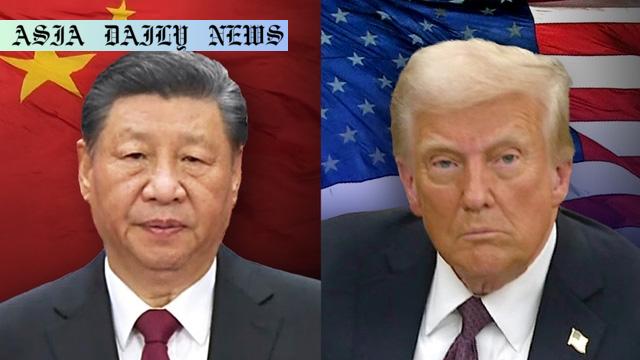Tariff War: China’s media announces countermeasures against US tariffs, including levies on coal, LNG, and large machinery.

Introduction: The Escalation of the Tariff War
China has announced and begun implementing countermeasures against the United States in response to President Donald Trump’s administration’s decision to increase tariffs on Chinese imports. This decision marks the continuation of trade tensions between the two largest economies, further solidifying what is widely referred to as the ‘Tariff War.’
The Details of China’s Countermeasures
Effective Monday, China imposed a 15-percent tariff on U.S. coal and liquefied natural gas (LNG), two key energy exports from the United States. Additionally, a 10-percent tariff was placed on various U.S. goods, including crude oil, agricultural machinery, and large-engine automobiles. These measures were engineered as direct countermeasures to the 10-percent tariff Washington placed on Chinese imports earlier this year.
China’s aim is not only to retaliate effectively but also to send a message that unilateral tariff actions have economic consequences and worsen already strained bilateral relations. The tariffs will significantly impact American energy exports and heavy industries while potentially disrupting global supply chains further.
Government Statements and Clarifications
Guo Jiakun, a spokesperson for China’s Foreign Ministry, refrained from confirming the exact time of implementation of these tariffs during a news conference but reiterated China’s standing position that tariff wars produce no winners. Highlighting a desire to move away from economic tensions, Guo stated that cooperation and mutual respect are essential for resolving such disputes.
China has strongly emphasized the inherent damages of prolonged trade conflicts and called for constructive dialogue. While the retaliatory tariffs have been viewed as a defensive measure, Beijing has also signaled its intent to maintain a long-term strategy to mitigate the effects of any economic fallout.
China’s Global Strategy to Mitigate Impacts
To offset the economic impacts of U.S. tariffs, China is actively seeking to expand its markets elsewhere. A business delegation, comprising representatives from petrochemical and machinery manufacturing industries, embarked on a trade visit to Kazakhstan earlier this week. This move underscores China’s strategy to strengthen trade ties with nations in Central Asia, the Middle East, and Europe to sustain its economic trajectory despite adversities stemming from U.S. actions.
This outreach reflects China’s larger objective of diversifying its markets to reduce reliance on U.S. trade. By focusing on regions like Asia, Europe, and the Middle East, China seeks to create robust trade avenues, furthering its geopolitical and economic goals.
Broader Implications for Global Trade
The ongoing trade tensions highlight a growing shift in global economic power dynamics and could have broad implications not only for Sino-U.S. relations but also for the overall framework of international trade. Prolonged tariff wars risk destabilizing global markets, with impacts trickling down to countries economically tied to the two superpowers.
Moreover, industries dependent on raw materials or semi-finished products from both economies may face higher production costs and disruptions in supply chains. This could potentially stifle innovation and economic growth in countries caught in the crossfire of the trade conflict.
Conclusion: A Path Forward
As both nations continue to levy retaliatory measures, calls for dialogue and equitable negotiations grow louder. The need to de-escalate tensions is vital for global stability and economic prosperity. While China’s countermeasures may shield its economy to some extent and shift the burden onto U.S. exporters, a sustainable and peaceful resolution can only emerge through diplomatic efforts centered on mutual trust and respect.
Commentary
Examining the Trade Tensions
The trade war between China and the United States has escalated into a challenging situation with global consequences. While tariffs are often employed as economic tools to force concessions, they are not without their drawbacks. The collateral damage to businesses on both sides and the potential ripple effects on other nations make this a situation requiring careful handling and foresight.
The Case for Constructive Dialogue
China’s emphasis on dialogue and mutual respect underscores the need for a shift in approach. Unilateral actions, such as tariffs, often exacerbate tensions rather than solving longstanding trade disputes. A collaborative strategy would ultimately be more beneficial for both sides, ensuring the resilience of economies and preserving the valuable trade relations that have been built over decades.
Implications for the Global Stage
This conflict serves as a reminder of the interconnected nature of the global economy. The repercussions of Sino–U.S. tensions are not confined to just these two countries; they will resonate across international markets. Developing nations reliant on U.S.–China trade will likely bear the brunt of disruptions, making it even more critical for resolution efforts to succeed.
Ultimately, while the immediate measures implemented may reflect strength and determination, the long-term benefits lie in cooperation and understanding. Both nations, as global leaders, must strive to set an example for resolving conflicts constructively and sustainably.


